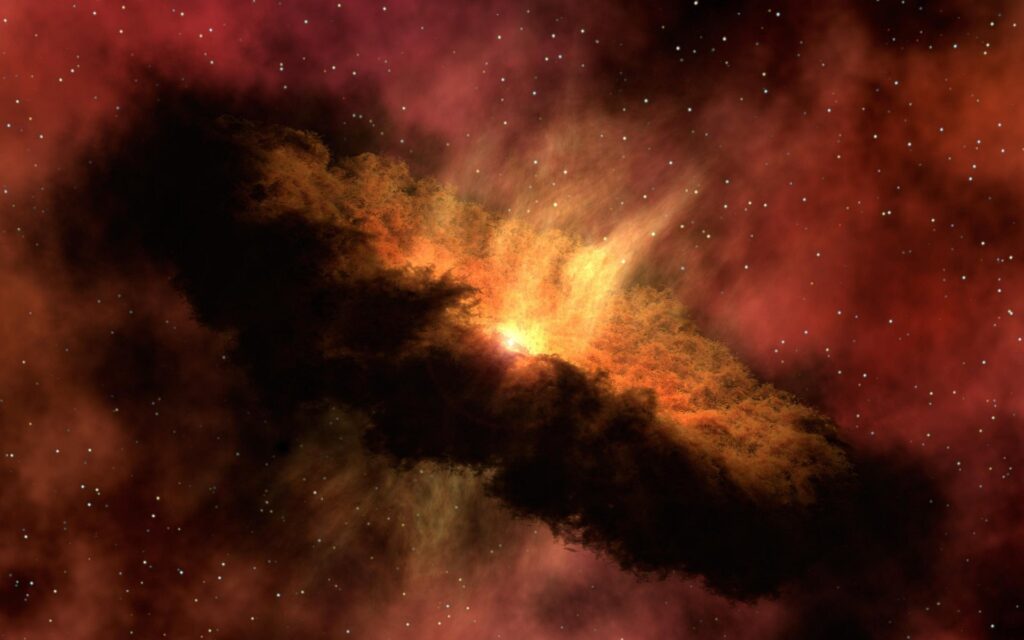Unveiling the Four Types of Astronomy
Unveiling the Four Types of Astronomy: Exploring the universe, astronomy gathers a wealth of information that sheds light on the wonders of the universe through its many subfields. Let’s take a closer look at the four main branches of astronomy, each of which adds something new to our knowledge of the universe.
Observational Astronomy: Gazing into the Celestial Canvas:

Observational astronomy is the enduring practice of exploring the universe directly. Astronomers use a collection of sophisticated telescopes, cameras, and satellites to observe the night sky and document the precise movements of celestial objects. This branch offers a captivating display of celestial objects, from individual stars to distant galaxies. It not only fascinates stargazers but also enhances our understanding of the vast size and complex nature of the universe.
The emergence of space telescopes such as the Hubble and the James Webb has greatly expanded the field of observational astronomy. These orbital observatories penetrate Earth’s air barrier to provide unique views of distant galaxies, nebulae, and exoplanets. The imagery and data obtained serve as a temporal tool, providing glimpses into the evolution of the universe and stimulating important inquiries about our astronomical beginnings.
Theoretical Astronomy: Crafting Cosmic Narratives:

In the field of theoretical astronomy, astronomers construct complex stories using the precise language of mathematics and physics. This category goes beyond the limits of direct observation by using models to explain the unobserved forces that shape the universe. Theoretical astronomers explore abstract phenomena such as black holes, dark matter, and cosmic inflation, creating theoretical frameworks that connect what is already known to what is still unknown.
The Big Bang is an important achievement in theoretical astronomy because it provides a theoretical explanation for the beginning of our universe. Using mathematical equations and theoretical frameworks, astronomers have provided a detailed description of the origin and expansion of the universe, as well as the following evolution of galaxies and cosmic structures.
Astrophysics: Illuminating the Forces at Play:

Astrophysics is a field of study that investigates the fundamental laws of physics that govern the universe, with the goal of understanding the mysteries of the universe. It goes beyond the limitations of observational astronomy, employing concepts from physics to understand the characteristics of celestial objects. Astrophysics reveals the complex interplay of cosmic forces, from the powerful gravitational forces that shape galaxies to the nuclear fusion that fuels stars.
Astrophysics relies heavily on the study of light. Astrophysicists use spectroscopy to investigate the composition and temperature of celestial objects. This field of study expands our understanding of the fundamental forces that govern the universe, leading to important breakthroughs such as the detection of gravitational waves and the discovery of the mysterious properties of dark matter.
Astrobiology: Seeking Life Beyond Our Blue Planet:

Astrobiology, a recently established field within astronomy, focuses its attention on the intriguing possibility of extraterrestrial life. Astronomers investigate the possibility of other celestial bodies, both within and outside our solar system, that are capable of supporting life, based on the knowledge that life on Earth thrives in a wide range of diverse and severe settings.
Astronomers are fascinated by Mars, which has a mysterious past involving water, as well as the frozen moons of Jupiter and Saturn, which have oceans beneath their surfaces. Scientists want to find conditions favorable for life by analyzing the extremophiles found on Earth and examining the atmospheres of exoplanets. Astrobiology increases our curiosity about the possible existence of life beyond Earth, making it a field that combines the disciplines of astronomy, biology, and planetary science.
Conclusion:
Ultimately, unveiling the four types of astronomy facilitates a harmonious and balanced investigation of the universe. Observational astronomy focuses on capturing visual data from celestial objects, while theoretical astronomy constructs narratives to explain astronomical phenomena. Astrophysics analyzes and explains the forces and processes occurring in the universe. Astrobiology extends our search for extraterrestrial life beyond Earth. Collectively, these elements form a comprehensive strategy that drives humanity’s quest to understand the vast scale and mysterious aspects of the vast universe that surrounds us.